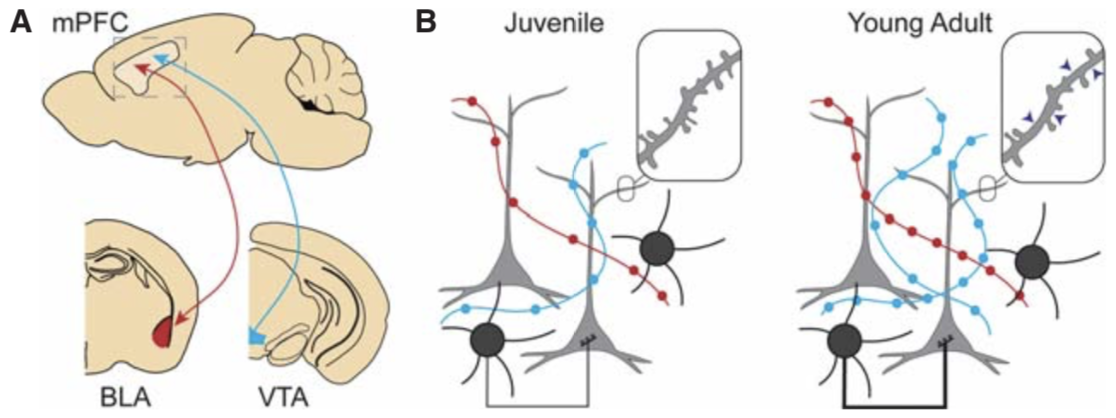The maturation of the prefrontal cortex (PFC) during adolescence is thought to be important for cognitive and affective development and mental health risk. Whereas many summaries of adolescent development have focused on dendritic spine pruning and gray matter thinning in the PFC during adolescence, we highlight recent rodent data from our laboratory and others to call attention to continued synapse formation and plasticity in the adolescent period in specific cell types and circuits. In particular, we highlight changes in inhibitory neurotransmission onto intratelencephalic (IT-type) projecting cortical neurons and late expansion of connectivity between the amygdala and PFC and the ventral tegmental area and PFC. Continued work on these “late blooming” synapses in specific cell types and circuits, and their interrelationships, will illuminate new opportunities for understanding and shaping the biology of adolescent development. We also address which aspects of adolescent PFC development are dependent on pubertal processes.
Kristen Delevich, A. Wren Thomas, and Linda E. Wilbrecht, Adolescence and “Late Blooming” Synapses of the Prefrontal Cortex [local pdf], Cold Spring Harb Symp Quant Biol (2019)
